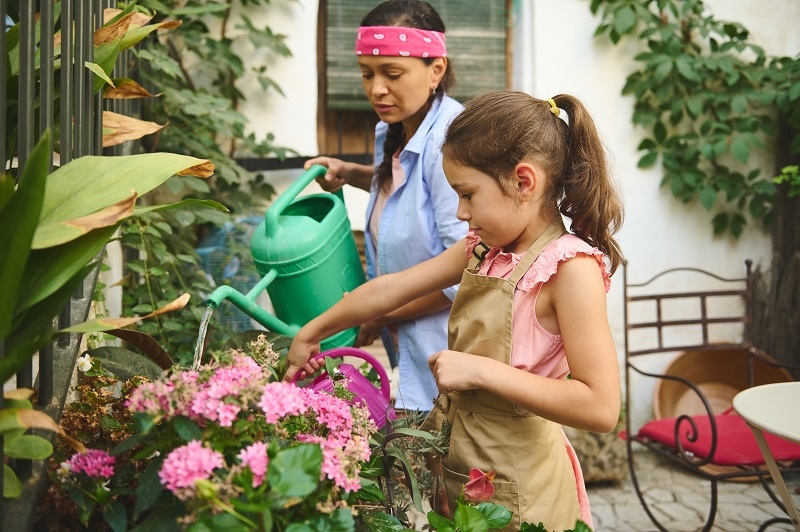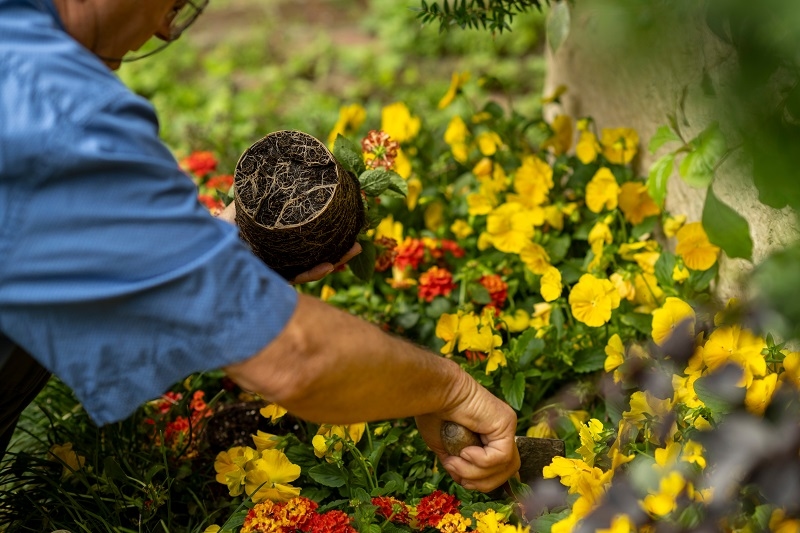
Flowers have this incredible way of making a space feel alive. A dull corner suddenly looks cheerful, a plain balcony transforms into a cozy retreat, and even small front yards feel welcoming. If you’ve always admired flower gardens but felt unsure where to start, don’t worry—you’re not alone. Beginner flower gardening can look intimidating at first glance, but with a little know-how, you’ll find it’s less about strict rules and more about enjoying the process.
When people think about gardening, they often picture vegetables or fruit trees. But here’s the truth: flowers are often the easier path. They grow quickly, reward you with color, and don’t demand years of patience. And unlike a tomato plant that’s all about yield, flowers exist purely to be admired.
They’re forgiving, too. If you pick the right ones for your space, you’ll be amazed at how much beauty comes with relatively little effort. And let’s be honest—sometimes you just want that instant gratification.
So, where do you begin? The first step is choosing the right plants. Beginner flower gardening works best when you match flowers to your lifestyle and environment. Do you have full sun or mostly shade? Are you someone who waters regularly, or do you tend to forget until the leaves start drooping?
Pick plants that suit you. Marigolds, zinnias, and sunflowers love sun and bounce back even if you miss a watering here or there. Impatiens and begonias thrive in shade and give you plenty of color without much fuss. Start with small wins, and your confidence will grow alongside your plants.
Not all flowers are equally fussy. There are plenty of easy flowers for beginners that don’t ask for more than the basics: sunlight, a bit of water, and occasional trimming. Marigolds are practically foolproof, producing cheerful orange and yellow blooms all summer. Zinnias grow fast and tolerate heat. Nasturtiums not only add color but are also edible—bonus points if you like decorating salads.
For shady spots, impatiens and coleus are your friends. They bring texture and color without sulking about the lack of sun. These plants let you test the waters before diving into trickier species like roses or orchids.
No yard? No problem. Learning how to plant flowers in pots opens up gardening to anyone with even a small balcony or porch. The trick is to choose containers with good drainage and soil that’s light, not heavy garden dirt.
Here’s a simple rule: big pot, big impact. Small pots dry out fast and need constant watering, but larger containers hold moisture better and give roots room to spread. When planting, don’t overcrowd—give each plant breathing space so it thrives. A good mix is to pair one tall flower, a few medium-height ones, and a trailing variety that spills over the edge.
If you do have ground to work with, a simple flower garden setup guide makes the task less overwhelming. Step one: clear the space. Remove weeds, rocks, and debris so your flowers don’t compete. Step two: improve the soil. Mix in compost or organic matter for nutrients. Step three: design before you dig. Lay out where taller plants go (toward the back), shorter ones in front, and maybe a pathway if space allows.
Plant in clusters of the same flower instead of one of each. It creates a stronger visual impact and looks intentional rather than scattered. And remember—gardens evolve. Don’t stress about perfection on day one.
New gardeners often ask: how much water is enough? There’s no one-size-fits-all answer, but here’s a guideline. Stick your finger in the soil. If the top inch is dry, water. If it still feels damp, wait a day. For pots, check daily, especially in hot weather. For garden beds, deep watering every few days works better than frequent light sprinkles.
And fertilizing? A balanced, slow-release fertilizer at planting time gives flowers a boost. Liquid feeds every few weeks can help keep blooms steady. Simple, right?

It’s not just about planting and walking away. A few flower care tips for first timers can make the difference between average and amazing. Deadhead (remove spent blooms) so the plant keeps producing new flowers instead of going to seed. Trim back any leggy growth to encourage fuller shapes. Mulching helps conserve moisture and keeps weeds down.
Also, don’t forget to enjoy the process. Gardening isn’t about perfection. It’s about learning, experimenting, and celebrating even small successes like the first bloom of the season.
Some people love to fuss over plants daily. Others? Not so much. Luckily, there are plenty of low-maintenance bloomsthat thrive without constant attention. Think cosmos, calendula, or vinca. They tolerate heat, don’t need rich soil, and reward you with color all season.
If you travel often or know you’re forgetful about watering, pick drought-tolerant varieties like gazanias or portulaca. That way, you still get the joy of flowers without the guilt of seeing wilted plants after a busy week.
One common rookie mistake is planting everything at once and watching the garden fade out by mid-summer. Mix it up. Choose flowers with different bloom times so your space stays alive for months. Early spring bulbs like tulips and daffodils give you a head start, followed by summer stars like petunias and zinnias, then fall standbys like chrysanthemums.
Rotating plants with the seasons also keeps your garden fresh. Think of it as curating a year-round display rather than a one-time show.
Don’t overthink design. Even in a small space, you can make your flower garden look polished with a few tricks. Group colors for impact. Use height to create layers. Mix textures—large bold blooms with finer, delicate flowers. Add foliage plants for balance.
If you’re nervous, stick to a color palette. Shades of pink and purple feel calming. Bright reds and yellows create energy. White flowers glow at night under moonlight, making evening spaces feel magical.
Yes, bugs will show up. Don’t panic. Most are harmless, and many (like bees and butterflies) are actually your allies. For the occasional troublemaker—aphids, slugs, or spider mites—a blast of water, neem oil, or a sprinkle of diatomaceous earth usually does the trick.
Diseases like mildew or rot often come from overcrowding or overwatering, so spacing and airflow are your secret weapons. Prevention is easier than cure, so keep an eye out and act early.
Starting a flower garden doesn’t require years of experience or a green thumb. With the right choices—easy plants, good soil, and a bit of care—you’ll be surprised at how quickly your space transforms. Whether it’s pots on a balcony or beds in a yard, flowers bring beauty into your everyday life.
So why wait? Grab a packet of seeds or a few starter plants, roll up your sleeves, and begin. Gardening isn’t just about growing flowers—it’s about growing confidence, patience, and joy along the way.
This content was created by AI